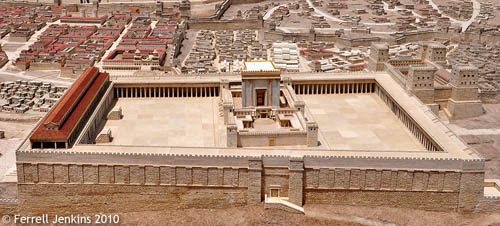The apostle Peter wrote much, by comparison to the size of his first epistle, about the Christian and submission. I wish to call attention to something he said about the relation of wives to their husbands. Notice the reading in four English versions.
Your beauty should not consist of outward things like elaborate hairstyles and the wearing of gold ornaments or fine clothes; (1 Peter 3:3 CSB)
Do not let your adorning be external–the braiding of hair and the putting on of gold jewelry, or the clothing you wear– (1 Peter 3:3 ESV)
Let your beauty not be external– the braiding of hair and wearing of gold jewelry or fine clothes– (1 Peter 3:3 NET)
Your beauty should not come from outward adornment, such as braided hair and the wearing of gold jewelry and fine clothes. (1 Peter 3:3 NIV)
Years ago I was impressed with the comments by William Barclay about the elaborate dressing habits of the upper class women of the Greco-Roman world.
In the world of the Greeks and the Romans it is interesting to collect the references to personal adornments. There were as many ways of dressing the hair as there were bees in Hybca. Hair was waved and dyed, sometimes black, more often auburn. Wigs were worn, especially blonde wigs, which are found even in the Christian catacombs; and hair to manufacture them was imported from Germany, and even from as far away as India. Hairbands, pins and combs were made of ivory, and boxwood, and tortoiseshell; and sometimes of gold, studded with gems. (Barclay, Daily Study Bible Series: The Letters of James and Peter)
He gives other illustrations of the expensive clothing and jewelry of some of the women of the Imperial household. He says,
Christianity came into a world of luxury and decadence combined.
In face of all this Peter pleads for the graces which adorn the heart, which are precious in the sight of God. These were the jewels which adorned the holy women of old. Isaiah had called Sara the mother of God’s faithful people (Isaiah 51:2); and if Christian wives are adorned with the same graces of modesty, humility and chastity, they too will be her daughters and will be within the family of the faithful people of God.
Kistemaker calls attention to a comment by J.N.D. Kelly,
The elaboration in hair-styles, make-up, dress and personal jewelery in the [first] and [second] cent[urie]s is eloquently attested by the literature and art of the period.
With that in mind I decided to show a few examples of statuary of some of the women of the royal households. The first is a woman from the time of Nero (A.D. 54-68). Peter’s letters were written during that period.
The next example is of Livia, the wife of Augustus and the mother of Tiberius.
And finally, here is a bust of a neice of Trajan (A.D. 98-117).
Can you imagine the women of that time watching the TV award shows or reading the latest glamor magazines and not wanting to have their hair fixed the same way?
There is a lesson here for everyone, both female and male, who seeks to imitate Christ.
















You must be logged in to post a comment.